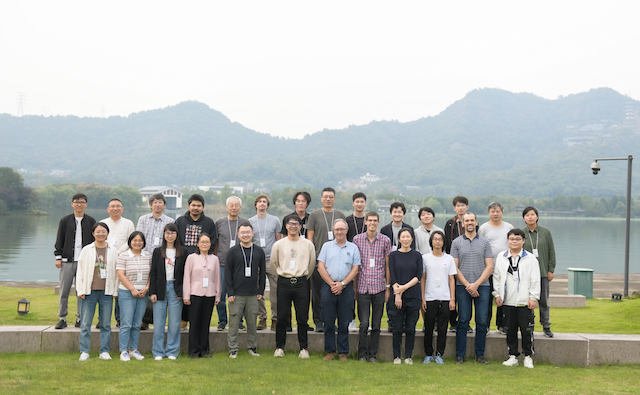Lagrangian Multiform Theory and Pluri-Lagrangian Systems (23w5043)
Organizers
Frank Nijhoff (University of Leeds)
Linyu Peng (Keio University)
Yang Shi (Flinders university)
Da-jun Zhang (Shanghai University)
Description
The Institute for Advanced Study in Mathematics will host the "Lagrangian Multiform Theory and Pluri-Lagrangian Systems" workshop in Hangzhou, China from October 22 to October 27, 2023.
Workshop resources - external webpage
Formulated first by Maupertuis and Euler around 1744, the least-action principle, asserting the tendency of Nature to follow in its time-evolution paths requiring the least amount of work, has become one of the foundational principles in Physics. It forms a unifying perspective for the mathematical formulation of classical mechanics, through theories of Lagrange and Hamilton, while its counterpart in Quantum Mechanics is Feynman's formulation through the path integral. On both classical and quantum level the action is a functional (a function of functions) of the possible trajectories of the system described through a Lagrange function (also known as ‘the Lagrangian’) depending on the "fields" (e.g. position variables of particles) and their derivatives.
In 2009 a new direction in variational calculus was proposed, called Lagrangian multiform theory (also referred to as pluri-Lagrangian systems), which breaks with the conventional approach in a fundamental way: in this new theory the Lagrangian is no longer a simple function of the fields, but an extended object (a differential or difference p-form). Furthermore, the Lagrangian is not put in by hand, i.e. chosen on the basis of secondary considerations (such as requiring certain symmetries), but emerges itself as a solution of the principal variational equations. These equations come from varying both the fields (as in the conventional theory) as well as the hyper-surfaces over which the action is integrated in the space of independent variables. The theory forms unique departure from the standard picture, in that it forms the first least-action principle that merges variational calculus with the key integrability notion of 'multidimensional consistency' (which is the key property of integrable systems, comprising the class of remarkable model equations which allow for the coexistence of infinite families of equations on one and the same mathematical functions). The fast development of the theory in the last decade, establishing the basic principles of the classical theory, demonstrating the applications to integrable systems and making the first steps towards a quantum theory, make it very timely to have a meeting on this new subject. The ambition of this novel viewpoint on the least-action principle, possibly as a candidate for a new foundational principle of physics, compel to branch out to researchers working in fundamental physics.
The Institute for Advanced Study in Mathematics (IASM) in Hangzhou, China, and the Banff International Research Station for Mathematical Innovation and Discovery (BIRS) in Banff, are collaborative Canada-US-Mexico ventures that provide an environment for creative interaction as well as the exchange of ideas, knowledge, and methods within the Mathematical Sciences, with related disciplines and with industry. The research station in Banff is supported by Canada's Natural Science and Engineering Research Council (NSERC), the U.S. National Science Foundation (NSF), Alberta's Advanced Education and Technology, and Mexico's Consejo Nacional de Ciencia y Tecnología (CONACYT).






